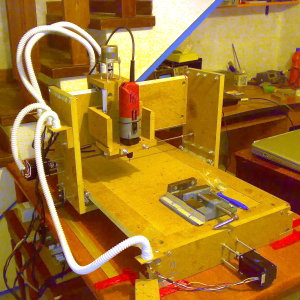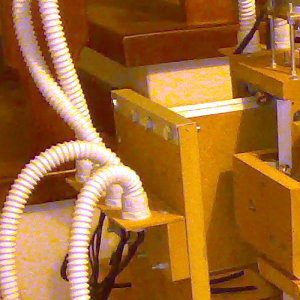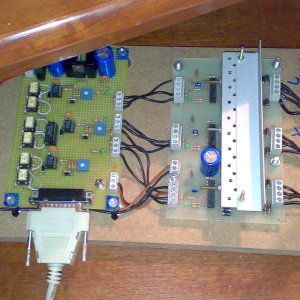
I have gotten a lot of requests asking, can this machine make a guitar? Alessandro created a 2nd generation CNC machine using this website as a guide and from the images he provided, I can say he was quite successful. Not only that, he also built his electronics from scratch and his wire management is absolutely fantastic.
I have never seen such a cool wire management scheme. I appear that he is using a white plastic conduit type of material. Builders of these machines know very well that after the build, wires become a problem. There are a multitude of wires that apply to these machines including motor wires (up to 8 wires per motor), power cables, sensor wires (typically for limit or home switches), and cables to connect to the computer, drivers and breakout board. However, the number of wires isn't the critical issue. Making sure that these wires do not interfere with moving parts is hugely important. There are motors on each axis, most of which move independently. There are limit and home switches that also move with the axes of the machine.

And finally, the router has a power cable that move all over the place. Your machine is moving and cutting a large job. A nightmare situation would be that the power cable gets caught on a part of a machine and disconnects. Well, guess what, the machine doesn't know that the router has stopped (unless a sensor is used to read the voltage in the power cable). So, the CNC machine keeps moving and tries to cut with an end mill not turning.
The machine will find its limits very quickly. Alessandro's wire management configuration and technique is great and I encourage other users to use great and inventive techniques for wire management. There are also wire management mechanism on the market that other CNC machines use widely. Check them out and get some ideas.
The overall machine is designed after the 2nd generation of the CNC machine on this website. The machine uses the chamfer edges with aluminum angle technique. Since Alessandro is using one 3/4" piece of MDF for the table, he invented a technique to keep sag from happening with a roller device connected to the gantry side. In essence, he is using the stability of another table to achieve this, as you can see in the image to the left. The table below the machine includes a thin aluminum strip to keep a good flat surface on the table and minimize wear to the table.
Alessandro wired and soldered his own driver board. He based the driver on the L297/L298 pairing. You can see more of this on buildyourcnc.com website where I was previously creating a prototype
board with these integrated circuits. He did a very nice job with the overall layout.
So, with this 2nd generation CNC machine, he has proved to be quite successful with his endeavor to cut out the body of a chitarra (guitar) using 1/4" all thread lead screws, an MDF based CNC router and great wire management techniques.


1 comment:
Very good post! Thank you for your work!
Post a Comment